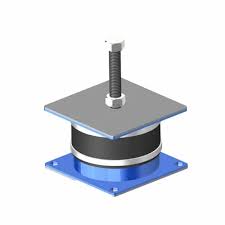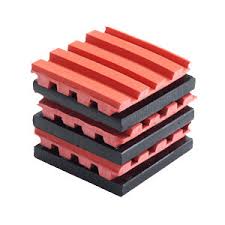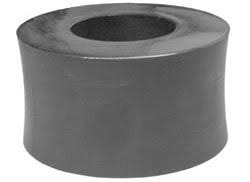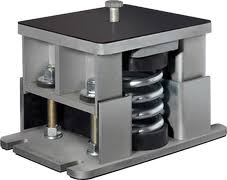Maximizing Stability: The Benefits of a Floor Mount Vibration Isolator Spring
Floor mount vibration isolator spring is an essential component for maximizing stability in various industrial and commercial settings. The benefits of utilizing a floor mount vibration isolator spring are numerous, including improved equipment performance, reduced noise and vibration, and extended machine longevity. In this article, we will explore the advantages of incorporating a floor mount vibration isolator spring into your equipment setup and how it can contribute to overall stability and efficiency.
Maximizing Stability: The Benefits of a Floor Mount Vibration Isolator Spring is a topic that explores the advantages of using floor mount vibration isolator springs in various industrial and commercial settings. These isolator springs are designed to minimize the transmission of vibrations and shock from machinery and equipment to the surrounding environment, thereby improving stability and reducing the potential for damage or disruption. By effectively isolating vibrations, these springs can enhance the performance and longevity of sensitive equipment, as well as create a safer and more comfortable working environment for personnel. Additionally, the use of floor mount vibration isolator springs can help to meet regulatory requirements for noise and vibration control in certain industries. Overall, these isolator springs offer a cost-effective solution for maximizing stability and minimizing the negative effects of vibrations in a wide range of applications.
Maximizing Stability: The Benefits of a Floor Mount Vibration Isolator Spring discusses the advantages of using this type of isolator in industrial and commercial settings. These isolator springs are designed to reduce the transmission of vibrations and shock from machinery and equipment, improving stability, and minimizing potential damage or disruption. They enhance the performance and longevity of sensitive equipment, create a safer and more comfortable working environment, and help meet regulatory requirements for noise and vibration control. Overall, floor mount vibration isolator springs offer a cost-effective solution for maximizing stability and reducing the negative effects of vibrations.
Understanding the Importance of Floor Mount Vibration Isolator Spring

Understanding the importance of floor mount vibration isolator springs is essential for ensuring the stability and performance of sensitive equipment. These isolators are designed to absorb and minimize the transmission of vibrations from the floor to the equipment, preventing potential damage or disruptions caused by external forces. The use of vibration isolator springs can help to prolong the lifespan of equipment, improve overall performance, and create a safer working environment. It is important to select the right type of isolator based on the specific requirements of the equipment and the environmental conditions in which it will be operating. Additionally, proper installation and maintenance of these isolators are critical for achieving optimal results and maximizing their effectiveness.
Choosing the Right Floor Mount Vibration Isolator Spring for Your Equipment

Choosing the right floor mount vibration isolator spring for your equipment involves considering the weight of the equipment, the frequency and amplitude of the vibrations, and the specific requirements for isolation. It is important to select a spring with the appropriate load capacity to effectively support the equipment while minimizing vibration transmission. Additionally, the natural frequency of the spring should be matched to the frequency of the vibrations for optimal isolation performance. It is also crucial to consider the environmental conditions, such as temperature, and any potential interference with the equipment's operation. Consulting with a professional engineer or vibration isolation specialist can help in selecting the most suitable floor mount vibration isolator spring for your specific equipment and application.
Installation Guide for Floor Mount Vibration Isolator Spring

The installation guide for floor mount vibration isolator spring includes detailed instructions for proper installation and use of the isolator spring. This may include information on the necessary tools, equipment, and safety precautions required for installation. It will also outline the specific steps and techniques for mounting the isolator spring to the floor, ensuring stability and effective vibration isolation. Additionally, the guide may include maintenance tips and troubleshooting advice to ensure optimal performance of the isolator spring.
Advantages of Using Floor Mount Vibration Isolator Spring in Industrial Settings

Floor mount vibration isolator springs provide several advantages for use in industrial settings. Some of the key advantages include: 1. Decreased Vibrations: Floor mount vibration isolator springs effectively reduce the level of vibrations transmitted from industrial equipment to the surrounding environment. This helps to minimize structural damage and equipment wear, ultimately extending the lifespan of machinery and reducing maintenance costs. 2. Improved Productivity: By reducing the impact of vibrations on equipment and surrounding structures, floor mount vibration isolator springs can contribute to improved productivity in industrial settings. This is especially important in precision manufacturing processes where even minor vibrations can have a significant impact on product quality. 3. Enhanced Safety: Vibration isolators help to create a safer working environment by minimizing the risk of accidents and injuries caused by excessive equipment vibrations. This is particularly crucial in settings where heavy machinery is in operation. 4. Noise Reduction: In addition to dampening vibrations, floor mount vibration isolator springs also help to reduce noise levels generated by industrial equipment. This can lead to a more comfortable working environment for employees and mitigate potential noise pollution concerns for neighboring areas. Overall, the use of floor mount vibration isolator springs in industrial settings can result in improved equipment performance, reduced maintenance costs, and a safer and more comfortable work environment.
Key Factors to Consider When Selecting Floor Mount Vibration Isolator Spring
1. Load capacity: Ensure the floor mount vibration isolator spring has the capacity to support the weight of the equipment or machinery it will be used for. 2. Resilience: The isolator spring should be able to withstand constant vibration and shock without losing its effectiveness. 3. Material: Choose isolator springs made from durable materials such as steel or rubber, depending on the specific application and environmental conditions. 4. Isolation efficiency: Look for isolator springs that provide a high level of vibration isolation to protect the equipment and surrounding structures. 5. Installation requirements: Consider the space and mounting options available for the isolator spring, and ensure it can be installed properly. 6. Environmental factors: Take into account the temperature, moisture, and potential exposure to chemicals or other elements that may affect the performance of the isolator spring. 7. Cost-effectiveness: Compare the benefits and long-term value of different isolator spring options to find the most cost-effective solution for your needs.
Top Benefits of Upgrading to Floor Mount Vibration Isolator Spring
1. Improved Vibration Isolation: Upgrading to a floor mount vibration isolator spring can significantly improve the isolation of vibrations, resulting in a smoother and quieter operation of machinery and equipment. 2. Increased Equipment Lifespan: The use of vibration isolator springs can help minimize the wear and tear on machinery, ultimately extending their lifespan and reducing the frequency of maintenance and repairs. 3. Enhanced Stability: Floor mount vibration isolator springs provide a stable foundation for heavy equipment, preventing excessive movement and ensuring a secure working environment. 4. Reduced Noise Levels: By effectively isolating vibrations, these isolator springs can help reduce the noise generated by machinery and equipment, creating a more comfortable and productive work environment. 5. Improved Performance: Upgrading to floor mount vibration isolator springs can enhance the overall performance of machinery and equipment by minimizing the impact of external vibrations and disturbances. 6. Versatile Applications: These isolator springs can be used in various industrial and commercial settings, making them a versatile solution for addressing vibration-related issues across different types of equipment. 7. Cost Savings: In the long run, the use of vibration isolator springs can result in cost savings by reducing the need for frequent maintenance, repairs, and replacements due to excessive vibration and wear. 8. Compliance with Regulations: Upgrading to floor mount vibration isolator springs can help ensure compliance with industry regulations and standards related to vibration control and workplace safety.
Common Mistakes to Avoid When Using Floor Mount Vibration Isolator Spring
1. Overloading the spring: It is crucial to calculate the weight of the machine or equipment being isolated to ensure that the floor mount vibration isolator spring can support the load. Overloading the spring can lead to premature failure and reduced isolator effectiveness. 2. Improper installation: Ensure that the floor mount vibration isolator spring is installed correctly according to the manufacturer's guidelines. Improper installation can lead to instability and reduced vibration isolation performance. 3. Neglecting maintenance: Regular maintenance of the floor mount vibration isolator spring is essential to ensure its proper functioning and longevity. Neglecting maintenance can result in reduced effectiveness and potential failure of the isolator. 4. Ignoring environmental factors: Consider the environmental conditions in which the floor mount vibration isolator spring will be used. Factors such as temperature, moisture, and chemical exposure can affect the performance and lifespan of the isolator. 5. Using the wrong type of isolator: It is important to select the appropriate type of floor mount vibration isolator spring for the specific application. Using the wrong type of isolator can lead to ineffective vibration isolation and potential damage to the equipment. 6. Not considering dynamic loads: Consider the dynamic loads and frequency of vibration that the equipment will generate. Failing to account for dynamic loads can result in inadequate vibration isolation and potential damage to the equipment and surrounding structures.
How Floor Mount Vibration Isolator Spring Can Improve Workplace Safety
small vibration isolation mounts
Floor mount vibration isolator springs can improve workplace safety by effectively reducing the transmission of vibrations from machinery or equipment to the surrounding environment. This is important as excessive vibrations can not only cause discomfort and potential health issues for workers, but can also lead to equipment malfunctions or failures. By using vibration isolator springs, the impact of these vibrations can be mitigated, creating a safer and more comfortable working environment. Additionally, the use of these isolators can help to extend the lifespan of machinery and equipment, reducing the need for frequent maintenance and repair, further contributing to workplace safety and efficiency.
In conclusion, the floor mount vibration isolator spring provides numerous benefits for maximizing stability in various applications. Its ability to effectively dampen vibrations and minimize the transmission of noise makes it a valuable addition to any machinery or equipment. By incorporating this technology, businesses can improve the performance and longevity of their assets while creating a safer and more comfortable working environment for employees. Investing in a floor mount vibration isolator spring can ultimately lead to greater productivity and cost savings in the long run.
See also
https://www.sorbothane.com/vibration-isolation.aspx